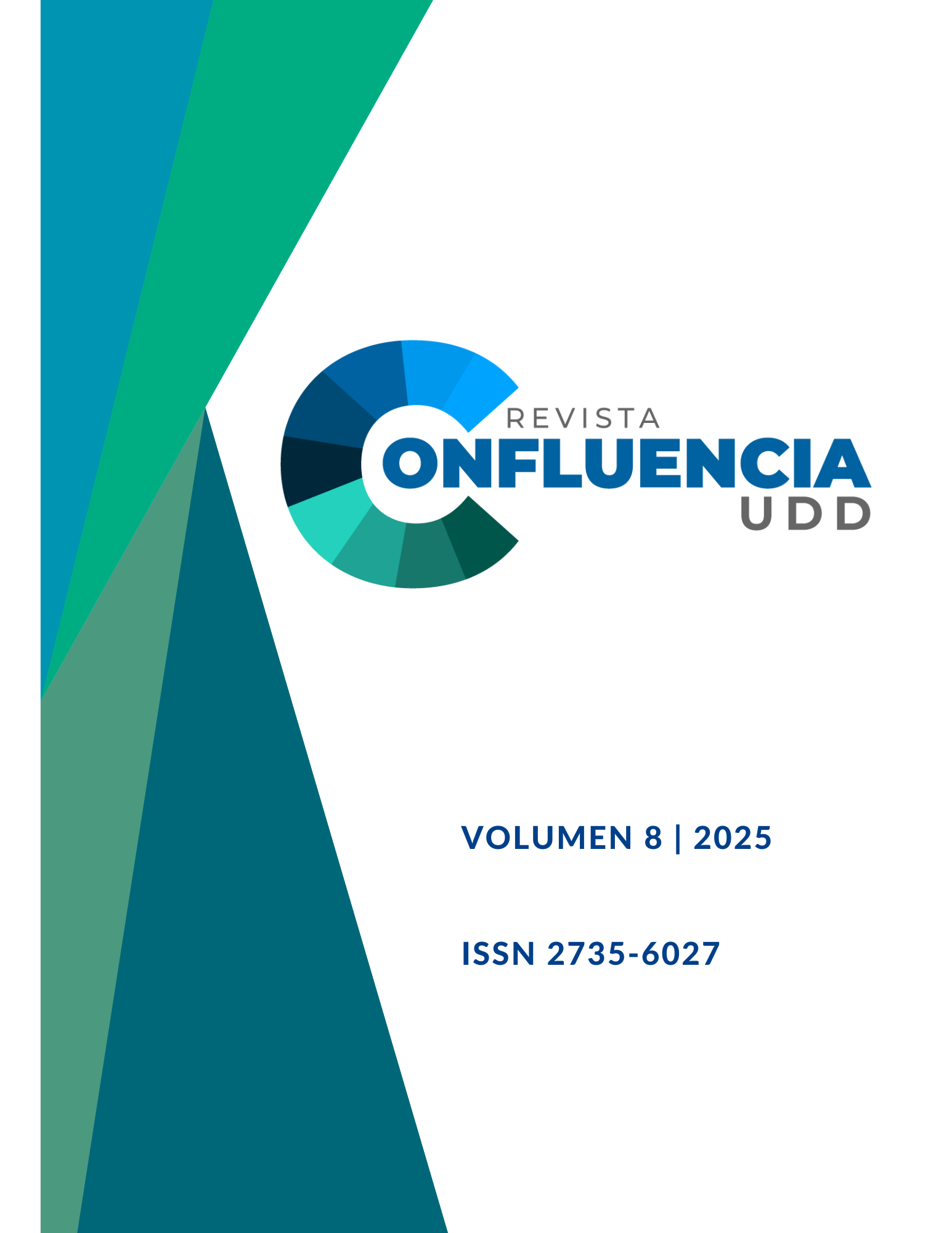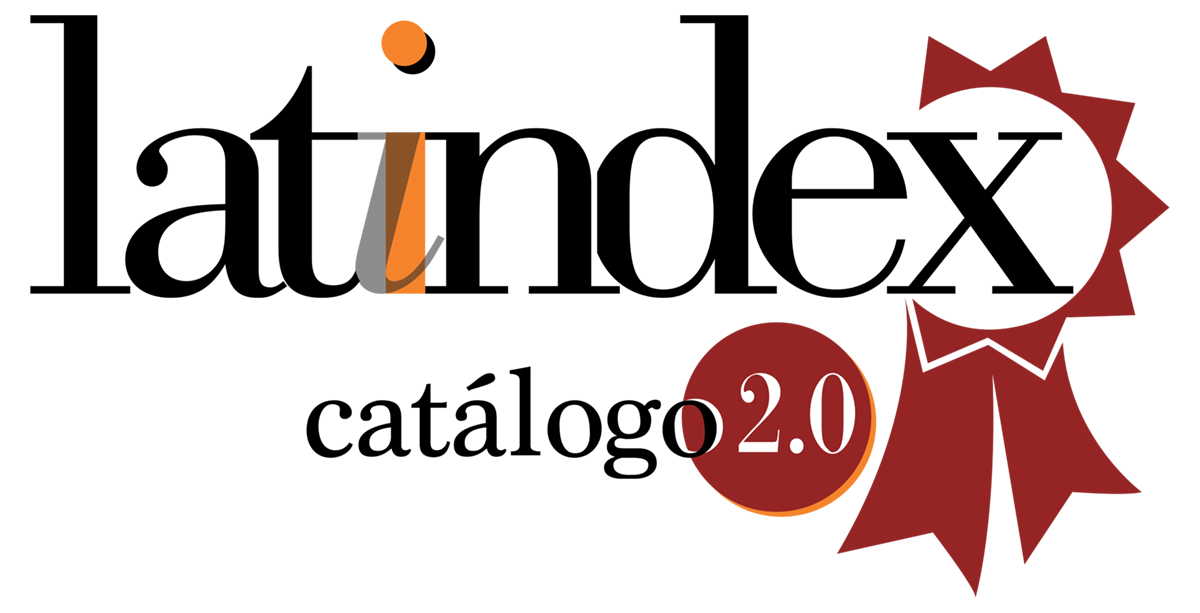Impacto de las disfunciones del piso pélvico en la autoestima y autoimagen en mujeres: Revisión de alcance
DOI:
https://doi.org/10.52611/confluencia.2025.1354Palabras clave:
Autoestima, Autoimagen, Disfunciones de Piso Pélvico, Incontinencia Urinaria, Prolapso de Órganos PélvicosResumen
Introducción: Las disfunciones del piso pélvico provocan en las mujeres una serie de efectos negativos en la calidad de vida, su autoestima y su autoimagen generando un aislamiento social en ellas. Objetivo: Determinar el impacto de las disfunciones de piso pélvico en la autoestima y/o autoimagen de mujeres durante los años 2013-2023. Metodología: Una revisión de alcance, empleando la metodología PRISMA y las preguntas CASPe para la revisión y análisis de la evidencia científica, retrospectiva, extraída de las bases de datos WOS, Scopus, PubMed y LILACS. Resultado: Se constató que aquellas mujeres que presentan algún tipo de disfunción de piso pélvico tienen un efecto negativo con su autoestima y/o autoimagen. La disfunciones más predominante en esta población es la incontinencia urinaria y la menos estudiada es la incontinencia fecal, mientras que el prolapso de órganos pélvicos afecta de manera significativa la autoimagen genital de las mujeres. Por ende, las disfunciones del piso pélvico generan un deterioro en la salud mental de las mujeres, afectando negativamente la interacción con su entorno y su autopercepción. Discusión y Conclusión: Las disfunciones del piso pélvico afectan negativamente la autoestima, autoimagen y calidad de vida de las mujeres, generando consecuencias emocionales como vergüenza, culpa y aislamiento social. Estos efectos se agravan por factores como la edad, nivel educativo, estado nutricional y severidad de los síntomas. El estudio destaca la necesidad de un enfoque biopsicosocial e interdisciplinario en el tratamiento, integrando apoyo psicológico para abordar el impacto emocional y mejorar el bienestar integral de las pacientes.
Descargas
Citas
Good M, Solomon E. Pelvic floor disorders. Obstet Gynecol Clin North Am [Internet]. 2019 [citado el 29 de noviembre 2024];46(3):527-40. Disponible en: http://dx.doi.org/10.1016/j.ogc.2019.04.010
Handelzalts JE, Yaakobi T, Levy S, Peled Y, Wiznitzer A, Krissi H. The impact of genital self-image on sexual function in women with pelvic floor disorders. Eur J Obstet Gynecol Reprod Biol [Internet]. 2017 [citado el 29 de noviembre 2024];211:164-8. Disponible en: http://dx.doi.org/10.1016/j.ejogrb.2017.02.028
Peinado-Molina R, Hernández-Martínez A, Martínez-Vázquez S, Rodríguez-Almagro J, Martínez-Galiano J. Pelvic floor dysfunction: prevalence and associated factors. BMC Public Health [Internet]. 2023 [citado el 29 de noviembre 2024];23(1):2005. Disponible en: http://dx.doi.org/10.1186/s12889-023-16901-3
Musibay R, Borges R. Cuestionarios de calidad de vida en las mujeres con disfunciones del suelo pélvico. Rev Cubana Obstet Ginecol [Internet]. 2016 [citado el 29 de noviembre 2024];42(3):372-85. Disponible en: http://scielo.sld.cu/scielo.php?script=sci_arttext&pid=S0138-600X2016000300013&lng=es&tlng=es
Mostafa Elbana H, Mohammed Salama A, Mohammed Barakat M. Effect of Urinary Incontinence on Quality of Life and Self Esteem of Postmenopausal Women. Am. J. Nurs. Sci [Internet]. 2018 [citado el 29 de noviembre 2024];7(5):182-91. Disponible en: http://dx.doi.org/10.11648/j.ajns.20180705.15
Peinado Molina RA, Hernández Martínez A, Martínez Vázquez S, Martínez Galiano JM. Influence of pelvic floor disorders on quality of life in women. Front Public Health [Internet]. 2023 [citado el 29 de noviembre 2024];11:1180907. Disponible en: http://dx.doi.org/10.3389/fpubh.2023.1180907
Noa Pelier BY, Martínez Torres J del C, García Delgado J Ángel. Factores de riesgo y formas clínicas de disfunciones del suelo pélvico en mujeres de edad mediana. RCMFR [Internet]. 2017 [citado el 29 de noviembre de 2024];8:13-24. Disponible en: https://revrehabilitacion.sld.cu/index.php/reh/article/view/17/224
Lowder JL, Ghetti C, Oliphant SS, Skoczylas LC, Swift S, Switzer GE. Body image in the Pelvic Organ Prolapse Questionnaire: development and validation. Am J Obstet Gynecol [Internet]. 2014 [citado el 29 de noviembre de 2024];211(2):174.e1-9. Disponible en: http://dx.doi.org/10.1016/j.ajog.2014.03.019
Santis-Moya F, Viguera S, Miranda V. Caracterización clínica de las disfunciones de piso pélvico en mujeres chilenas sintomáticas que consultan en un hospital universitario. Rev Chil Obstet Ginecol [Internet]. 2020 [citado el 29 de noviembre 2024];85(6):578-83. Disponible en: http://dx.doi.org/10.4067/s0717-75262020000600578
Yaakobi T, Handelzalts JE, Peled Y, Levy S, Wiznitzer A, Krissi H. Direct and Indirect Effects of Personality Traits on Psychological Distress in Women With Pelvic Floor Disorders. Female Pelvic Med Reconstr Surg [Internet]. 2017 [citado el 29 de noviembre 2024];23(6):412-6. Disponible en: http://dx.doi.org/10.1097/spv.0000000000000391
Lopez-Cortes O, Betancourt-Núñez A, Bernal Orozco M, Vizmanos B. Scoping reviews: una nueva forma de síntesis de la evidencia. Investigación Educ Médica [Internet]. 2022 [citado el 29 de noviembre 2024];11(44):98-104. Disponible en: http://dx.doi.org/10.22201/fm.20075057e.2022.44.22447
Gümü?soy S, Kavlak O, Dönmez S. Investigation of body image, self?esteem, and quality of life in women with urinary incontinence. Int J Nurs Pract [Internet]. 2019 [citado el 29 de noviembre 2024];25(5):e12762. Disponible en: http://dx.doi.org/10.1111/ijn.12762
Lee H-Y, Rhee Y, Choi K. Urinary incontinence and the association with depression, stress, and self-esteem in older Korean Women. Sci Rep [Internet]. 2021 [citado el 29 de noviembre 2024];11(1):9054. Disponible en: http://dx.doi.org/10.1038/s41598-021-88740-4
Saboia DM, Firmiano MLV, Bezerra KC, Vasconcelos JA, Oriá MOB, Vasconcelos C. Impacto dos tipos de incontinência urinária na qualidade de vida de mulheres. Rev Esc Enferm USP [Internet]. 2017 [citado el 29 de noviembre 2024];51:e03266. Disponible en: http://dx.doi.org/10.1590/s1980-220x2016032603266
Türk FHK, Koçak HS. Quality of life and self-esteem in women living with urinary incontinence in Turkey. Int J Urol Nurs [Internet]. 2023 [citado el 29 de noviembre 2024];17(3):278-88. Disponible en: http://dx.doi.org/10.1111/ijun.12377
Olsson F, Berterö C. Living with faecal incontinence: trying to control the daily life that is out of control. J Clin Nurs [Internet]. 2015 [citado el 29 de noviembre 2024];24(1-2):141-50. Disponible en: http://dx.doi.org/10.1111/jocn.12617
Moroni RM, Alves da Silva Lara L, Ferreira CHJ, de Mello Constantino M, Oliveira Brito LG. Assessment of Body Image, Sexual Function, and Attractiveness in Women With Genital Prolapse: A Cross-Sectional Study With Validation of the Body Image in the Pelvic Organ Prolapse (BIPOP) Questionnaire. J Sex Med [Internet]. 2019 [citado el 29 de noviembre 2024];16(1):126-36. Disponible en: http://dx.doi.org/10.1016/j.jsxm.2018.11.005
Zhu L, Wang X, Shi H, Xu T, Lang J, Tang X. Reliability and validity of a Chinese version of the Modified Body Image Scale in patients with symptomatic pelvic organ prolapse. Int J Gynaecol Obstet [Internet]. 2015 [citado el 29 de noviembre 2024];130(2):187-9. Disponible en: http://dx.doi.org/10.1016/j.ijgo.2015.03.026
Murillo M. Incontinencia urinaria femenina. Rev Med CR y CA [Internet]. 2012 [citado el 29 de noviembre 2024];(602):225-30. Disponible en: https://www.binasss.sa.cr/revistas/rmcc/602/art12.pdf
Bouallalene Jaramillo K. Estudio descriptivo para la asociación de la actividad física, el consumo de cafeína, alcohol, el estrés, la obesidad, el estreñimiento, la historia obstétrica y la calidad de vida con la incontinencia urinaria en mujeres entre 25 y 35 años [Internet]. Barcelona: Universitat Autònoma de Barcelona: 2019 [citado el 29 de noviembre de 2024]. Disponible en: http://hdl.handle.net/10803/667215
Gónzalez-Maldonado L, Erosa-Villareal RA, Janssen-Aguilar R, Laviada-Molina HA, Méndez-Domínguez NI. Incontinencia urinaria: factores de riesgo y frecuencia en mujeres mayores de 60 años, en el sureste de México. Rev Mex Urol [Internet]. 2019 [citado el 29 de noviembre 2024];79(3):e03. Disponible en: http://dx.doi.org/10.48193/rmu.v79i3.408
Pérez LE, Rojas I. Menopausia: Panorama actual de manejo. Rev Fac Med [Internet] 2011 [citado el 29 de noviembre 2024];19(1):56-65. Disponible en: http://www.scielo.org.co/scielo.php?script=sci_arttext&pid=S0121-52562011000100006
García Méndez A. Incontinencia urinaria y calidad de vida de las mujeres en una zona básica de salud. RqR Enfermería Comunitaria [Internet]. 2017 [citado el 29 de noviembre 2024];5(4):61-70. Disponible en: https://dialnet.unirioja.es/servlet/articulo?codigo=6224484
Moreira Grecco A, Flores T. Tratamiento de la incontinencia fecal: una visión quirúrgica. Acta Gastroenterol Latinoam [Intrernet]. 2023 [citado el 29 de noviembre 2024];53(4):337-45. Disponible en: https://doi.org/10.52787/agl.v53i4.375
Mack I, Hahn H, Gödel C, Enck P, Bharucha A. Global Prevalence of Fecal Incontinence in Community-Dwelling Adults: A Systematic Review and Meta-analysis. Clin Gastroenterol Hepatol [Internet]. 2024 [citado el 29 de noviembre 2024];22(4):712-31. Disponible en: http://dx.doi.org/10.1016/j.cgh.2023.09.004
Tamanini JTN, Franceschi Júnior O, Santos JLF, Duarte Y, Sartori M, Girão M, et al. Fecal incontinence: incidence and risk factors from the SABE (Health, Wellbeing and Aging) study. Int Urogynecol [Internet]. 2022 [citado el 29 de noviembre 2024];33(11):2993-3004. Disponible en: http://dx.doi.org/10.1007/s00192-021-04914-8
Guillaume A, Salem A, Garcia P, Chander Roland B. Pathophysiology and therapeutic options for fecal incontinence. J Clin Gastroenterol [Internet]. 2017 [citado el 29 de noviembre 2024];51(4):324-30. Disponible en: http://dx.doi.org/10.1097/mcg.0000000000000797
Meyer I, Richter HE. Impact of fecal incontinence and its treatment on quality of life in women. Womens Health (Lond) [Internet]. 2015 [citado el 29 de noviembre 2024];11(2):225-38. Disponible en: http://dx.doi.org/10.2217/whe.14.66
Meyer I, Blanchard CT, Markland AD, Gibson EG, Richter HE. Fecal Incontinence Symptoms and Impact in Older Versus Younger Women Seeking Care. Dis Colon Rectum [Internet]. 2019 [citado el 29 de noviembre 2024];62(6):733-8. Disponible en: http://dx.doi.org/10.1097/dcr.0000000000001353
Organización Mundial de la Salud. Preguntas más frecuentes [Internet]. Ginebra: OMS; 2023 [citado el 29 de noviembre de 2024]. Disponible en: https://www.who.int/es/about/frequently-asked-questions
Ministerio de Salud de Chile. Instrumento de Evaluación. Compromisos de Gestión 2024. Compromiso de gestión N°21: Fortalecimiento de la salud de la mujer [Internet]. Santiago; Subsecretaría de Redes Asistenciales; 2024 [citado el 29 de noviembre de 2024]. Disponible en: https://www.ssbiobio.cl/Archivos/Transparencia_Activa/Gestion_Institucional/2024/Orientaciones_Tecnicas_COMGES_2024.pdf#page=1.00&gsr=0
Descargas
Publicado
Cómo citar
Número
Sección
Licencia
Derechos de autor 2025 Revista Confluencia

Esta obra está bajo una licencia internacional Creative Commons Atribución-NoComercial-SinDerivadas 4.0.









